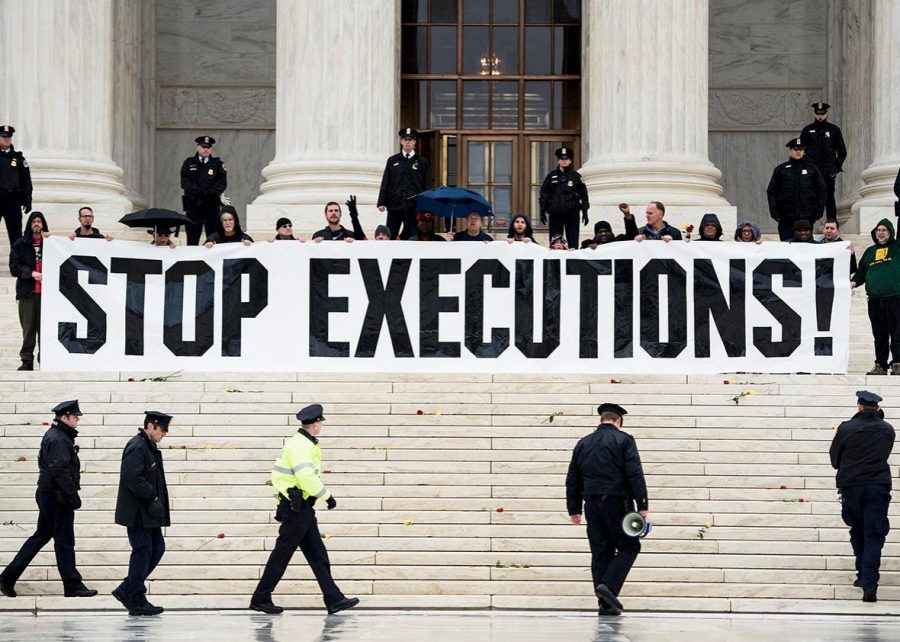THE DEATH PENALTY: AN UNNECESSARY EVIL
Photo courtesy of slate.com
Anti-death penalty protestors at the Supreme Court
Texas prisoner Larry Swearingen was convicted of murder and sentenced to death – a fitting end, many may think. But Swearingen’s case was full of doubt: forensic evidence was not lined up, date and times were unmatched. Considering even his guilt was not proven beyond a reasonable doubt, Swearingen’s case definitely required more time and investigation. In a desperate bid, he put forth a request to the Supreme Court for more time.
His plea was refused, and Swearingen was executed by the state of Texas on August 21, 2019.
Currently, there are 2,639 prisoners on death row in the United States. Since 1973, 165 people have been exonerated from death row. There is a general consensus that for someone to be sentenced to death, their guilt should be undeniable, or their crimes especially heinous. But as the case of Swearingen shows, that is not how the death penalty works. Doubts of guilt and comparatively smaller crimes can still result in an execution.
If innocent people being executed was not bad enough, the death penalty also suffers from racial bias. According to the Death Penalty Info Organization, a non-profit sharing inforamtion about the death penalty, in cases with a black defendant and white victim, 295 people were put on death row. In cases with a white defendant and black victim, 21 people were put on death row. Currently, even though blacks only account for 12% of the population, they make up 42% of death row inmates. Whites are 63% of the population, and whites make up 42% of death row inmates. This data irrefutably shows that the death penalty is racially biased, as black are significantly overrepresented by upwards of 30%.
Pro-death penalty arguments claim that the death penalty can deter criminals from commiting crimes. This is false as well. According to a survey of the top criminologists in the country done by the University of Colorado, 88% of those surveyed disagreed that the death penalty is an effective deferrent against crime. There is simply no good reason for the death penalty to continue to be legal.
Other pro-death penalty arguments include that it is cheaper to kill convicts than to keep them imprisoned, and that some crimes are so horrendous that keeping them alive is seen as unjust. For the first point, statistics show that it is three to four times more expensive to kill criminals than to simply keep them imprisoned. In Ohio, for example, capital punishment cases, the technical term death penalty cases, are 3.2 times more expensive than non-captial cases. Other states, like Texas and Kansas, report similar costs.
It is true that there are some people that have committed truly awful crimes, and allowing them continuing to live can be seen as unfair or unjust. Especially if there is definitive proof that they committed the crimes, such as through DNA testing.
There is a slight sense of satisfaction seeing someone supposedly get what they deserve. But this comes from a place of revenge, which is not what the goal should be. Prison should not just be a punishment, but a chance at rehabilitation. And for those whose crimes make them irredeemable, a life sentence without parole is punishment enough. Mass murderers rotting away to never see the light of day is something that we can all agree is fitting end.
The death penalty is an idea that sounds good, but in practice can lead to irreversible consequences: the death of innocent people. The idyllic death row prisoner is a rarity. Far too often people are sentenced to death without not enough evidence. It simply is not isn’t worth the supposed benefit of killing the worst criminals: the risk and consequences of killing an innocent person are too great.






